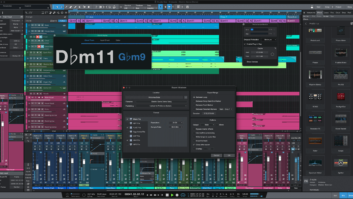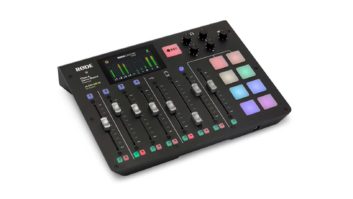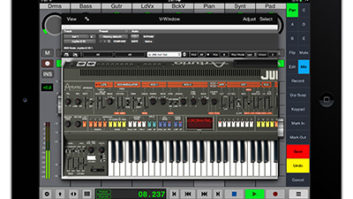
Everybody loves convenience. That is, of course, one of the fundamental reasons digital recording was so quickly embraced and has so quickly became ubiquitous. (Random access — cool! Nondestructive editing — yeah, that’s the ticket! Unlimited tracks, “perfect” copies — gimme summa that!) But with the wisdom of hindsight it’s clear that we rushed into the digital world without doing our homework, or our housekeeping, and we now have an overabundance of fundamental issues to address. These topics range from random labeling methods and insecure storage to nonstandard metadata and archiving methodologies, the dearth of documented credits for recording personnel, formats without longevity and — most important — the lack of a successful model for getting paid for all those “perfect” copies of the music you’ve created.
Let’s start with today’s average music recording project. In the typical workflow for material that’s born digital, audio is tracked to an external drive, most likely FireWire or USB. Then, through the lifespan of the project, it moves from studio to studio, and probably from drive to drive. When the project is complete, the master drive (if there actually is a “master drive”) gets stored on a shelf somewhere.
Unfortunately, as mentioned above, this common scenario creates a multitude of problems related to both the digital data containing the project’s audio information and the metadata (literally, “data about data”) that adds identifying descriptors to the audio data. What back in analog days was a fairly straight-ahead process of documenting information about 24 or 48 tracks of audio onto a track sheet, and then handing off clearly identified physical masters on a standardized analog format to a record label is now, well, yet another version of the 21st-century Wild West.
To learn more about digital data problems and potential solutions, we turned to John Spencer, president of BMS/Chace, a company with offices in Nashville, New York and Los Angeles that provides data-management services to the entertainment industry. With seven years in business developing digital solutions and special expertise in the music recording industry, BMS/Chace is championing the need for a more global solution for audio information management. To that end, the company has become a partner in an ambitious effort with the Library of Congress’ Preserving Creative America project (www.digitalpreservation.gov) to develop a standardized methodology for the collection and documentation of recorded musical assets — in other words, your album project. The project is scheduled to debut in the music community in the near future, but meanwhile, Spencer continues in the data-collection trenches.
“Among the services that BMS/Chace provides are outsourced master delivery for music labels, verification of assets and the creation of a viable digital preservation package for the master recording,” explains Spencer. “While supplying these services, we’ve identified a series of across-the-board issues that people need to be educated about.”
Six Reasons for Better Documentation
- Longevity of the carrier. Simply put, hard drives fail. Any carrier has the potential for failure. There are many storage options available, some better than others, but the assumption should be made that carrier obsolescence will become a factor with your digital preservation files. Educate yourself about the storage options that are available to you. (For some of the latest recommendations, see “Recommendation for Delivery of Master Recordings,” the result of a joint effort by the Audio Engineering Society and the Recording Academy Producers & Engineers Wing, at www.grammy.com/PDFs/Recording_Academy/Pro ducers_And_Engineers/DeliveryRecs.pdf.)
- Consolidation of DAW tracks. Often, the person attempting to archive a DAW session ends up with hundreds of audio and edit files. For ease of use by others in the recording chain and for proper archiving at the end of the project, files need to be consolidated and tracks identified. (C’mon, you’re not still using “Audio 1, Audio 2” for labels, are you?) In addition, digital preservation files have a much greater chance of survival if software and platform obsolescence are taken out of the storage equation. Make Broadcast Wave Format (BWF) standard operating procedure for archiving your projects.
- Lack of standardization for file naming, storage of file names and metadata usage. Will you be able to identify and locate the file you want to use or retrieve? For example, without proper documentation it’s impossible to determine which of the consolidated files was actually used for the final mix. In addition, metadata about the project should be collected during the recording and mixing process to facilitate repurposing and other monetization opportunities, as well as technical recording information and any other relevant information (performers, liner notes, etc.).
- Plug-ins. Some people want to document their plug-in usage; others may want to keep their settings confidential. The bottom line is, you can’t count on that plug-in being around in five years. Print the track both dry and with the plug-in. If you want, keep your settings proprietary. You can also document them for future use. But you can’t assume that the plug-in will be available in the long or even the short term.
- Checksums. When you’re ready to take the material on that hard drive you’ve put on the shelf and migrate it to another carrier, how do you know that you’ve created a bit-for-bit copy? That’s what checksums (cryptographic hash generators used to compare and check the integrity of files) are for. Say you have 20 files. You drag the files into a hash generator (such as MD-5) that creates 16-character streams, or “hash keys” for each file. Now you’ve got 20 16-character streams. When you copy that file to another piece of media, you can run the same hash algorithm app again to ensure that the hash keys are the same and that you’ve got an absolute bit-for-bit copy.
- Unique identifiers. Before you can create a checksum, you need to modify the file name so that you have two differently named identical files for comparison. It is recommended that you use unique identifiers, which are a strand of characters dropped into a section of the data header of a Broadcast WAV file. Remember that you don’t want to modify anything else in the file — just the name.
Connecting the Dots
“Understanding and putting into practice these six concepts will get you on your way to being in business,” Spencer says. “With consolidated files, standardized naming conventions, unique identifiers and checksums, you’ve organized the main pieces of information that need to be associated with a file to successfully retrieve your audio data — and your explanatory metadata. It’s best, of course, if you keep the files of metadata in a separate database file. So if you have 20 audio files, you should have 20 records in a database file, which includes the names, the checksums and the unique identifiers.
“This will provide you with what’s called the ‘linkage mechanism’ to identify which file is which,” Spencer continues. “Then, depending on how your metadata database is built, you can also have the ability to collect all of the technical data for the project, such as signal chain, microphones and instruments used, et cetera, along with descriptive metadata, such as performance information; engineer, producer and musician names; liner notes; even artwork.”
The BMS/Chace/Library of Congress project, when complete, will create a standardized template for the collection of all of this crucial technical and descriptive metadata, as well as the identifiers, unique IDs, checksums and proper file names. It will also provide the opportunity for a given project to collect the other critical information that’s generated during the course of the recording, including accurate song titles, publishing information and e-commerce necessities such as ISRC codes and their counterparts. Expect to hear more about this project: One of the challenges will be to educate people about the importance of using the system. To help do that, a number of partners are also onboard with the project, including Sony BMG Music, Universal Music Group, EMI, Disney Music Group and the Recording Academy Producers & Engineers Wing.
“People often tend to think that the studio is a kind of bubble where they go to create music,” Spencer concludes. “But when they’re out of the bubble and handing off their material to a label, a media company or an aggregator who’s going to get the music up for sale, there’s a whole other set of information that needs to be associated with the project, as well.
“What we are trying to create is a standard, unified way to hand off this data. People want their work to be seen by the search engines and to be conveniently and accurately tracked for payments. So not only is this information critical to the recording process, it’s also integral for meta-tagging for e-commerce and repurposing material for future use and revenue generation. While for most people, proper techniques for dealing with files and metadata are not sexy topics, they really are key to the whole process. The easier and more routine we can make it for these techniques to be adopted, the better off the whole industry will be.”






